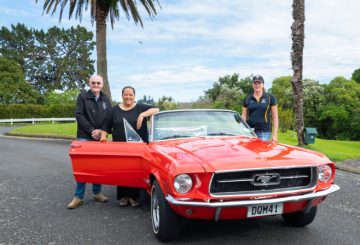NATO đã tích cực tìm kiếm sự hợp tác sâu sắc hơn với New Zealand và các quốc gia châu Á-Thái Bình Dương khác. Tuần trước, Bộ trưởng Ngoại giao New Zealand đã tham dự cuộc họp của các Bộ trưởng Ngoại giao NATO thường niên tại Brussels với các đối tác từ Úc, Nhật Bản và Hàn Quốc. Đầu tháng này, một quan chức hàng đầu của NATO đã đến thăm Wellington để thảo luận về tác động của cuộc chiến tại Ukraina đối với Ấn Độ Dương-Thái Bình Dương. Việc nhóm bốn quốc gia Ấn Độ Dương-Thái Bình Dương đôi khi được gọi là AP4, hay Tứ châu Á Thái Bình Dương. Sự quan tâm của liên minh tại Trung Quốc đã thúc đẩy phần lớn sự tham gia của AP4 với NATO. Gần đây của NATO làm sâu sắc quan hệ đối tác với các nước Ấn Độ Dương-Thái Bình Dương như New Zealand có thể làm trầm trọng thêm sự quân sự hóa của Thái Bình Dương, và có thể có nghĩa là New Zealand sẽ buộc phải đáp ứng mục tiêu chi tiêu quân sự của NATO là 2% GDP.
New Zealand dường như không chính thức gia nhập NATO do sự tập trung về địa lý của liên minh, nhưng việc tự sắp xếp chính nó với NATO như một phần của AP4 có thể được xem như là “NATO plus”. Điều này có thể có tác động đáng kể đối với đất nước, có thể là đáng kể như sự tham gia tiềm năng của nước này với hiệp ước AUKUS giữa Úc, Vương quốc Anh, và Hoa Kỳ. Sự tham gia của New Zealand với NATO và AUKUS có thể được xem như một sự chuyển đổi sang một chính sách đối ngoại cứng rắn hơn dưới sự lãnh đạo của Thủ tướng Chris Hipkins. Nó cũng sẽ thúc đẩy một nêm giữa New Zealand và Trung Quốc, đã bày tỏ sự phản đối sự tham gia của New Zealand với NATO trong quá khứ.





























































